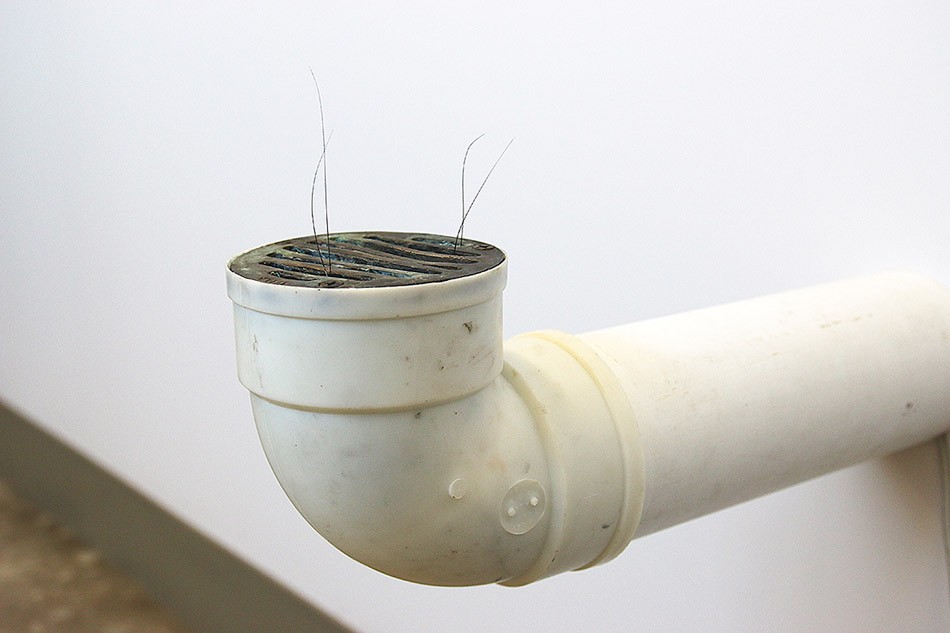A fascinating new show, recently opened at Gallery r, considers the world's volume of discarded objects and sidelined creatures. In "New Sense," artist Cecily Culver explores how the non-human world almost imperceptibly brushes against our own, and imagines the strange sentience of non-human experience.
Much of the work is drawn from Culver's thesis project, "Other Observations," which is explored in a booklet provided in the gallery. "Seemingly mundane, yet entirely specific moments of urban-desert-life are re-created, capturing and re-presenting where a glimmer of other aliveness appears," she says in the text. "'Other Observations' aims to ultimately highlight the noises, things, ephemera, and other beings that are active players in our world."

- PHOTO PROVIDED
- "Warehouse Dance," a mixed media sculpture by Cecily Culver, is part of "New Sense," currently on view at Gallery r.
Culver's go-to objects include ubiquitous white foam to-go cups, PVC drainage pipes, silvery Mylar balloons, the slippery presence of roaches, and slabs of concrete. Culver focuses on the background, upon objects, entities, and ephemera so commonplace, they are the visual white noise of our daily experience, and are nearly invisible.
For example, I walked past "Lid" twice before a nagging sensation resolved itself into the conclusion that the seemingly discarded garbage was in fact part of the show. Cast in bronze to resemble a tin lid crushed and wedged against the wall and floor, the golden tone of the object was like a beacon brushing at my subconscious, strangely signaling a desire for attention.
Culver's unlikely subjects symbolize what it might be like to experience the world from an object's perspective. "Some of her sculptural works recreate the undercurrents of daily activity: a life frequently closer to the ground," says the provided statement. But how can we consider the semblance of "life," found closer to the ground or in overlooked nooks?
An elegantly curving section of a sidewalk and curb rests low against one end of the gallery, with weeds growing out of a storm drain, seeking light, and urging us to consider what dwells in the damp, dark below.
This tactic is replayed humorously in "Warehouse Dance" in the next room. Jutting out low on one wall, a PVC drain pipe curves upward, with two pairs of roach's antennae poking out of a cast bronze grate to explore the world outside.
Much of Culver's work is about the viewer's imagination completing the picture. "I really want to bring the feeling of having to find the art," she says.
Another one of those easily-missed pieces is a PVC pipe standing upright against the wall. With nothing to do but look into it, I spied a convex mirror inside, and myself, reflected strangely down a worm hole.
The concept of self-portrait comes to play in this, and other of Culver's works not included in this show. Leafing through her thesis booklet, we encounter distorted glimpses of the artist in the bottom of foam cups, peering back through the tunnel like an alien observer.
The strangest part of the exhibit is found in the darkened second room, where a drum-shaped piece hangs on a wall. Indiscernible images are projected onto its circular, mirrored surface — I thought I caught trees and sky reflected in puddles, or the corrugated insides of a metal drum, but a glare on the surface made it impossible to tell. The work is paired with sound looped in jarring discord: the vibrato of low strings, bird song, and hissing static.
Standing in the room, bearing witness to an experience more alien than that of other animals, gave me a feeling of subtle paranoia. And while there is humor present in the work, there is an utterly foreign feeling — encroaching on the sinister — to some of the works.
"A kind of wonder emerges when we entertain the idea that the 'stuff' of our lives exist as entities in their own right," Culver says. "An attentiveness to the on-goings under foot reveals that there are clearly non-human forces constantly at work."
Wonder abounds, and our understanding of the impact of physical matter is low. Sometimes, dangerously so.
These things are actively changing our ecology, Culver says. "From a materials standpoint: expanded poly-styrene foam, polyethylene (plastic), and polyethylene terephthalate (mylar), have the capacity to irreversibly alter our ecology. Although these things lurk and linger at every corner, they constitute the background noise for our human existence."
Scientists have recently identified worms that have adapted to consume our plastic waste, which on the surface seems to 'deal' with our overabundance of it, but not really. The broken-down bits will go somewhere — everywhere — changing the planetary organism. It will eventually "infiltrate every system and affect us," Culver says.
In her statement, Culver cites Jane Bennett's book, "Vibrant Matter," in which she asks "...would patterns of consumption change if we faced not litter, rubbish, trash, or 'recycling,' but an accumulating pile of lively and potentially dangerous matter?"